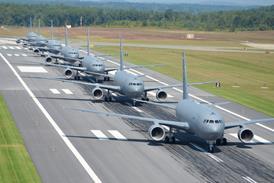FAA turns to new measures to resolve rising mishaps as the performance of AMASS is questioned once again
The US Federal Aviation Administration's new runway-incursion warning radars, the Airport Movement Area Safety System (AMASS), is continuing to come under fire as the agency explores other technologies and human factors in its efforts to prevent runway mistakes and possible mishaps.
Northrop Grumman's AMASS is seven years behind schedule and almost three times over its projected cost, officials recently told the House of Representatives aviation subcommittee. It is now in operation at just two of the 34 airports it is planned for - San Francisco and Detroit Metro - where its operational capabilities are already being questioned.
National Transportation Safety Board (NTSB) acting chairman Carol Carmody told the aviation panel that AMASS "does not appear to be able to provide sufficient warning time to prevent some runway collisions and does not provide direct warnings to flight crews and other vehicle operators".
FAA associate administrator for research and acquisition Steve Zaidman concedes that the agency had been overly optimistic about AMASS, prompting it to develop the Airport Surface Detection Equipment-X band, which will provide traffic data derived from automatic dependent surveillance-broadcast-equipped aircraft.
The FAA is also looking at the use of red-and-green stop and go lights of the type used on roads, but has struggled to develop appropriate sensor technology.
The runway safety office is adding a human factors focus by looking at initiatives in training, communications, procedures, airport signs, marks and lighting, data collection and establishing more detailed metrics, says William Davis, FAA runway safety chief. The FAA is also studying in-cockpit moving maps of airport surfaces.
The developments come as runway incursions at US airports are on the increase - 200 incidents up to 25 June compared with 198 incidents in the same period last year, according to the NTSB.
The FAA is still balking at adopting standard International Civil Aviation Organisation phraseology for air traffic controller use in directing surface operations. FAA has also resisted the NTSB's recommendation to end the practice of giving multiple landing clearances and a safety board recommendation to stop allowing departing aircraft to hold on active runways at night or in poor visibility, Carmody says.
The FAA says that adopting such steps would complicate the runway situation, increase controller workloads and possibly increase risks.
Source: Flight International























